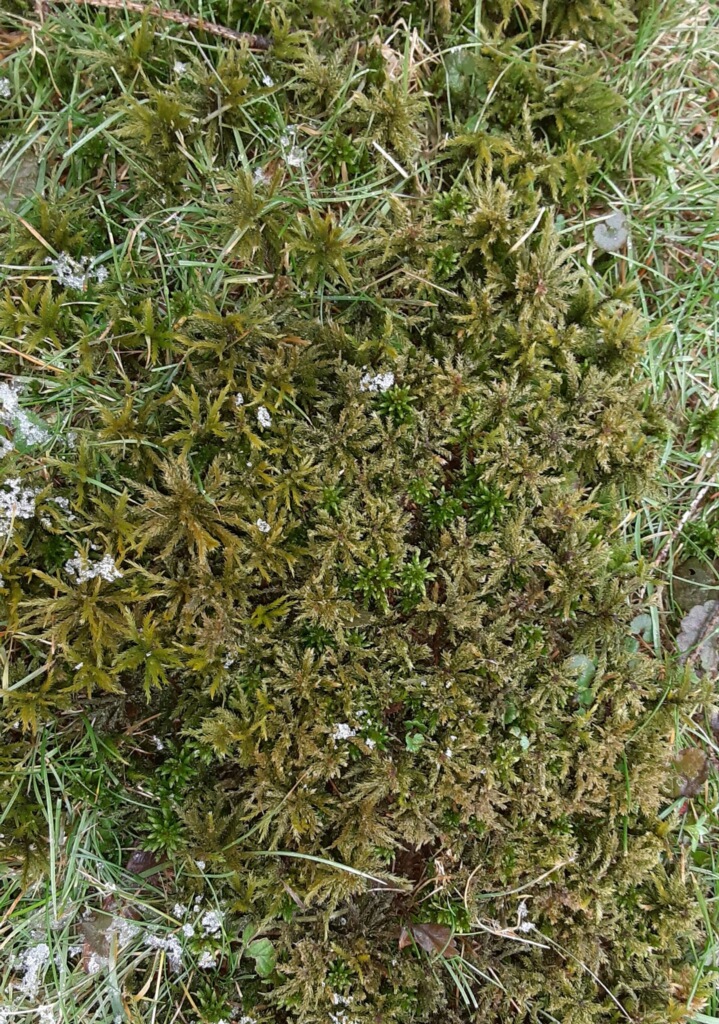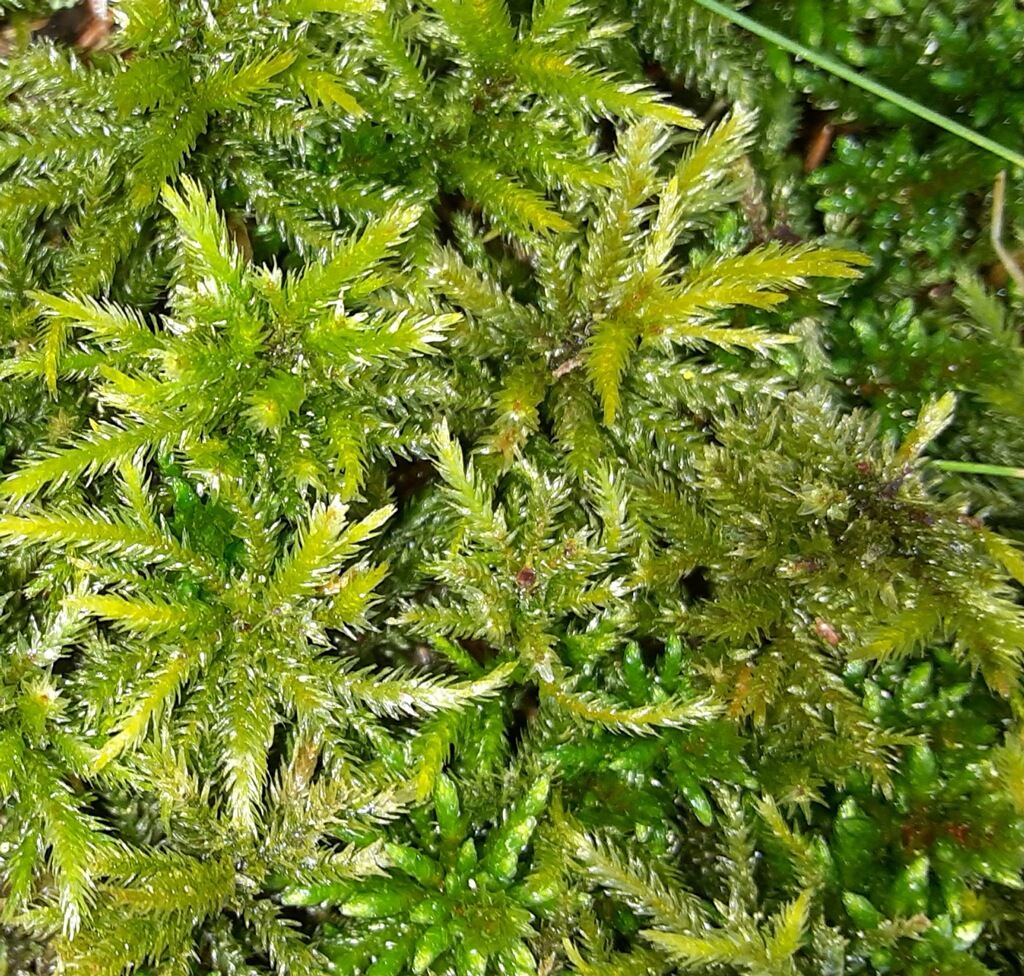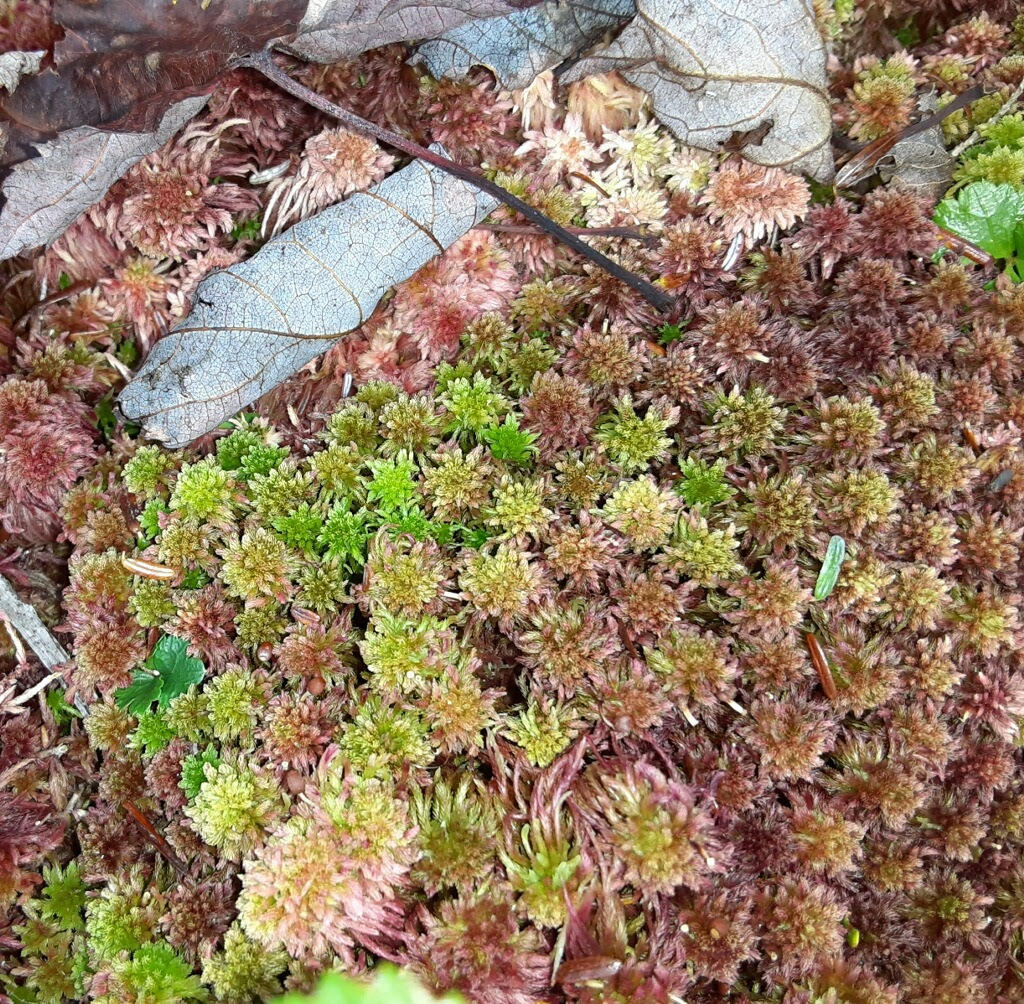By Susan Sprout
It’s Sphagnum Moss, for Pete’s sake! And when it has been decayed and dried, it is called “peat moss.” I found some, alive and well, growing in quite a few places in my lawn and wondered if living on what used to be an old creek bank had anything to do with the moss’s being comfortable (successful and expanding) there. I found out that some species of sphagnum do grow in small patches in drier conditions, getting required moisture from local rainfall. But mostly, they live in wet bogs, coniferous forests, and moist tundra. There may be as many as 380 species growing worldwide. Peat bogs occur in almost every country of the world and on all of the continents, where they account for nearly half of the world’s wetlands. With some ranging as deep as fifty feet, bogs cover 3% of the world’s surface. According to various resources, they can store an amazing 30% to 44% of the earth’s soil carbon.

Sphagnum mosses are a true moss (Phylum Bryophyta) that have no internal vessels for carrying water or nutrients, and are therefore limited in height. At the top of a plant is a dense cluster of young leafy branches. Small leaves that gather a majority of the plant’s energy do not have a mid-rib. They are made up of two kinds of cells – small, living, green ones that photosynthesize and larger, structural dead cells that have a huge water holding ability. Sphagnum can hold from sixteen to twenty-five times its dry weight, depending on the species.

Sphagnum is also non-flowering and reproduces by spores that form in capsules about a half inch above the ground. When matured and dried, the built-up tension within the capsule blows the lid off, dispersing minute spores (50 microns) in a vortex ring that travels at a speed of twelve feet per second. The donut-shaped spore cloud, similar to the smoke rings produced by cannon fire and cigar smokers, has been verified by high-speed photography to carry them upwards to heights of four to eight inches. Just what they need in order to catch the breeze for a good, long flight! On landing, the spores produce tiny, thread-like filaments that will bud and grow into more leafy moss plants. The plants especially in bogs can also reproduce by fragmentation. When a person or an animal slogs through, breaking apart the mosses and distributing the pieces, they float away and keep on growing. New plants eventually bury old plants. The acidic and watery and low oxygen conditions slow down the process of decomposition of the dead plants that keep being pushed down and compacted by what is growing above. Layer after layer of this slow buildup creates peat moss at the rate of about a millimeter a year. Carbon from the atmosphere captured and locked into the sphagnum’s tissues by photosynthesis makes peat bogs the largest terrestrial store of carbon in the world. The opposite occurs, of course, when people mine, drain, and dig up the peat bogs which have taken thousands of years to form. It adds a whopping two billion tons of carbon dioxide into the atmosphere which is 5% of the carbon total yearly.

Peat bogs provide habitat for a wide variety of peatland plants that like acidic living conditions – wild orchids, carnivorous plants, huckleberries, cranberries, as well as for plants that need a stable and dependable water supply like black spruce and hemlock seedlings. Turtles, frogs, insects, birds, benefit, as well. Twigs of acid-loving shrubs that grow in or near the bogs provide browse for deer, rabbits, and moose in the north. Muskrats and beavers and their predators visit, too. In the United States, about one-third of the country’s endangered and threatened species live in wetlands such as bogs. With low rates of decay, botanists and scientists that study weather patterns can look at preserved plant fragments and pollen to figure out past environments.
For more information, please check out the following:
World Wetlands Day instituted by the United Nations, and celebrated every February 2nd. (I should have written this article two weeks ago.)
SWAMP Sustainable Wetlands Adaptation and Mitigation Program, a joint program through the Center for International Forestry Research, US Forest Service, Michigan Tech and Oregon State University.

